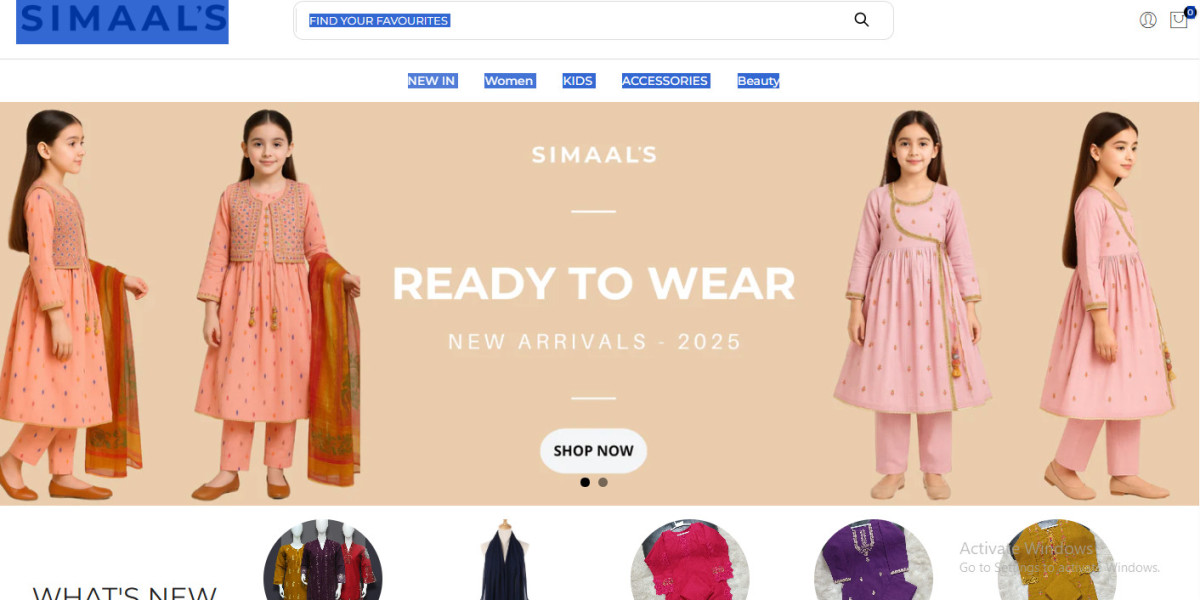The evolution of shopping in Pakistan has undergone a transformative shift, with e-commerce reshaping the way people buy goods and services. What was once limited to bustling bazaars and brick-and-mortar stores has moved into the digital realm. As of 2025, millions of Pakistanis shop online regularly, signaling a major cultural and economic change. This article explores how e-commerce is changing the way Pakistanis shop, delving into consumer behavior, technology, market trends, and societal impact.
1. The Digital Migration of Retail
E-commerce platforms have turned mobile phones and computers into virtual marketplaces. Pakistanis are now purchasing everything from groceries and electronics to fashion and furniture through websites and apps.
Brick-and-click models are emerging, where traditional retailers establish an online presence.
Purely digital brands are also thriving, reducing overhead and expanding customer reach.
Shopping has become a 24/7 experience, no longer limited to store hours.
2. Mobile-First Shopping Behavior
A majority of Pakistan's e-commerce traffic now comes from smartphones. This mobile-first approach is driven by:
Affordable smartphones and data packages
User-friendly apps from Daraz, Telemart, and others
Push notifications, in-app deals, and live sales sessions
Consumers enjoy shopping from anywhere—be it at home, during a commute, or even during breaks at work.
3. Greater Accessibility and Inclusion
E-commerce has made shopping more accessible for Pakistanis across various socio-economic backgrounds:
Rural and remote areas now have access to a broader product range.
People with disabilities or mobility challenges can shop independently.
Women, especially homemakers, are increasingly participating in commerce through online platforms.
This democratization of retail is empowering consumers and promoting digital inclusion.
4. Time-Saving and Convenience
In fast-paced urban centers, time is a valuable commodity. E-commerce offers:
Quick browsing, searching, and purchasing
Scheduled deliveries for groceries and essentials
Easy returns and exchanges from the comfort of home
For many, the convenience of home delivery outweighs the traditional thrill of mall shopping.
5. Expansion of Product Choice
Online platforms provide a vast variety of local and international brands, often unavailable in local stores. Consumers can:
Compare products across multiple sellers
Access niche items and international imports
Explore new brands through influencer promotions and ads
The digital shelf space is limitless, accommodating a much larger assortment than physical stores.
6. Personalized Shopping Experiences
E-commerce platforms are using data analytics and artificial intelligence to personalize user experiences:
Product recommendations based on past behavior
Targeted promotions and deals
Personalized landing pages and wish lists
These enhancements make online shopping more engaging and efficient, increasing customer satisfaction and retention.
7. Trust in Digital Transactions
Trust in online shopping has grown significantly, thanks to:
Transparent return and refund policies
Secure payment gateways
Reliable courier partnerships
Many platforms now offer “pay after delivery” options, free returns, and customer support, reducing anxiety around digital purchases.
8. Social Commerce and Community Influence
Social media has become a powerful driver of purchasing decisions in Pakistan:
Influencers on Instagram and TikTok promote everything from makeup to electronics
Live selling events and unboxing videos build excitement and trust
Facebook groups and WhatsApp circles enable peer-to-peer sales
E-commerce is now deeply embedded in social interactions, making kids shopping a communal activity.
9. E-commerce Entrepreneurship
The rise of e-commerce has sparked a wave of digital entrepreneurship:
Home-based sellers can start businesses with minimal capital
Platforms like Shopify, WooCommerce, and Facebook Shops lower entry barriers
Women and students are creating their own brands from home
This entrepreneurial boom is generating income opportunities and empowering a new generation of business owners.
10. Evolving Payment Ecosystem
From cash-on-delivery to digital wallets, Pakistan's payment landscape is diversifying:
JazzCash, Easypaisa, SadaPay, and Nayapay offer easy digital transactions
BNPL (Buy Now, Pay Later) models allow flexible payments
Credit card adoption is increasing, especially for high-ticket purchases
This financial flexibility encourages more frequent and larger purchases.
11. Environmental Awareness and Conscious Consumption
As e-commerce matures, environmental concerns are gaining attention:
Brands are reducing packaging waste and switching to sustainable materials
Local and ethical products are being highlighted
Consumers are more informed about carbon footprints and product origins
This consciousness is guiding buying decisions and reshaping business practices.
12. Logistics and Delivery Innovation
Efficient delivery is the backbone of successful e-commerce. Innovations include:
Real-time delivery tracking
Same-day delivery in urban areas
Smart lockers and pickup points in residential areas
Companies like TCS, Leopards Courier, and Bykea are playing a critical role in last-mile delivery, ensuring timely service.
13. Impact on Traditional Retail
Brick-and-mortar stores are evolving in response to online competition:
Many now offer hybrid models with both physical and online outlets
Some are transforming into experience centers for brand engagement
Others are partnering with delivery services to offer click-and-collect models
Traditional retail is adapting rather than disappearing.
14. Cultural and Lifestyle Shifts
Online shopping is changing not just habits but lifestyles:
Gift-giving has become easier with e-vouchers and online deliveries
Meal kits, subscription boxes, and bulk grocery services are altering domestic routines
Fashion trends spread faster thanks to real-time access to global styles
Digital convenience is redefining how families and individuals plan their lives.
15. E-commerce During Emergencies
E-commerce has proven essential during crises such as:
COVID-19 lockdowns, which accelerated adoption
Natural disasters where physical access is restricted
Political unrest or transport strikes
Its ability to deliver essential goods and services during tough times has reinforced its importance in national resilience.
16. Opportunities for Economic Growth
The e-commerce industry is becoming a key contributor to Pakistan’s economy:
Job creation in logistics, customer service, IT, and marketing
Boost to the SME sector through greater market access
Export potential through cross-border e-commerce
Government support and regulatory improvements are vital to sustaining this momentum.
17. Education and Skill Development
Online shopping is also shaping education and skill development:
Courses and certifications on digital marketing and e-commerce management
Workshops for artisans and home entrepreneurs
Career paths in UX design, logistics, and fintech
A growing ecosystem of learning is supporting the industry's expansion.
18. Future Technologies in E-commerce
The future of shopping in Pakistan is poised for even more technological integration:
Augmented Reality (AR) for virtual try-ons
Artificial Intelligence (AI) for better customer service
Blockchain for secure and transparent transactions
Voice commerce through smart speakers and assistants
These innovations will deepen personalization and enhance convenience.
19. Challenges and Concerns
Despite its growth, e-commerce faces several challenges:
Internet connectivity issues in rural regions
Cybersecurity threats and data privacy concerns
Delivery delays and product quality issues
Limited digital literacy among certain demographics
Ongoing investment in infrastructure and education is needed to overcome these hurdles.
20. The Road Ahead
E-commerce is more than just a trend—it is a fundamental change in how Pakistanis shop. As technology evolves and consumer expectations rise, businesses must continue to innovate, ensuring quality, trust, and convenience.
Consumers, too, must adapt to this new landscape by staying informed, making ethical choices, and leveraging the digital tools at their disposal.
Conclusion
E-commerce has not only changed the way Pakistanis shop—it has transformed their relationship with commerce itself. From convenience and variety to empowerment and entrepreneurship, the digital marketplace has opened new possibilities. As Pakistan navigates the next phase of digital evolution, e-commerce will remain at the heart of its economic and cultural transformation.
Whether you're buying a smartphone, launching a business, or exploring sustainable brands, e-commerce is your gateway to the future. The journey has just begun.







